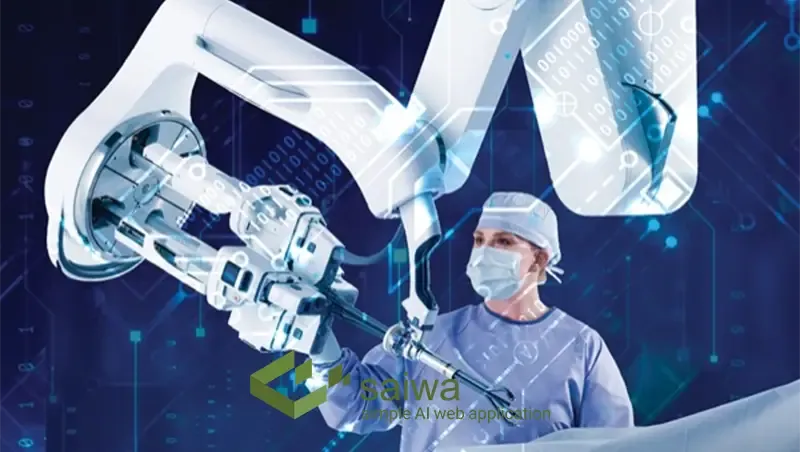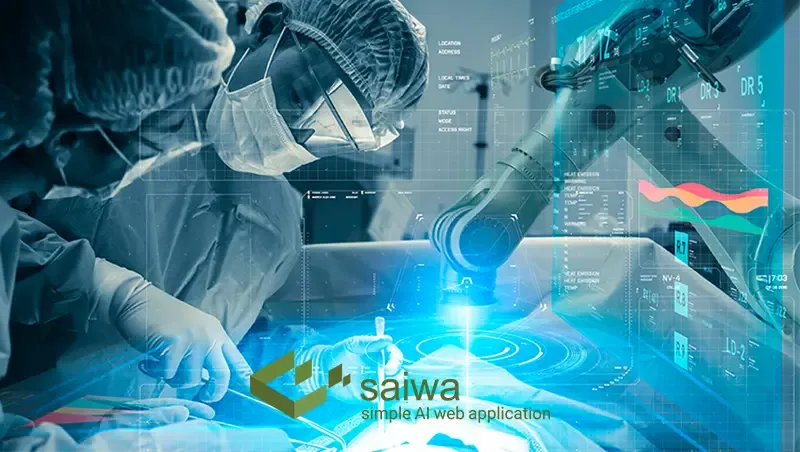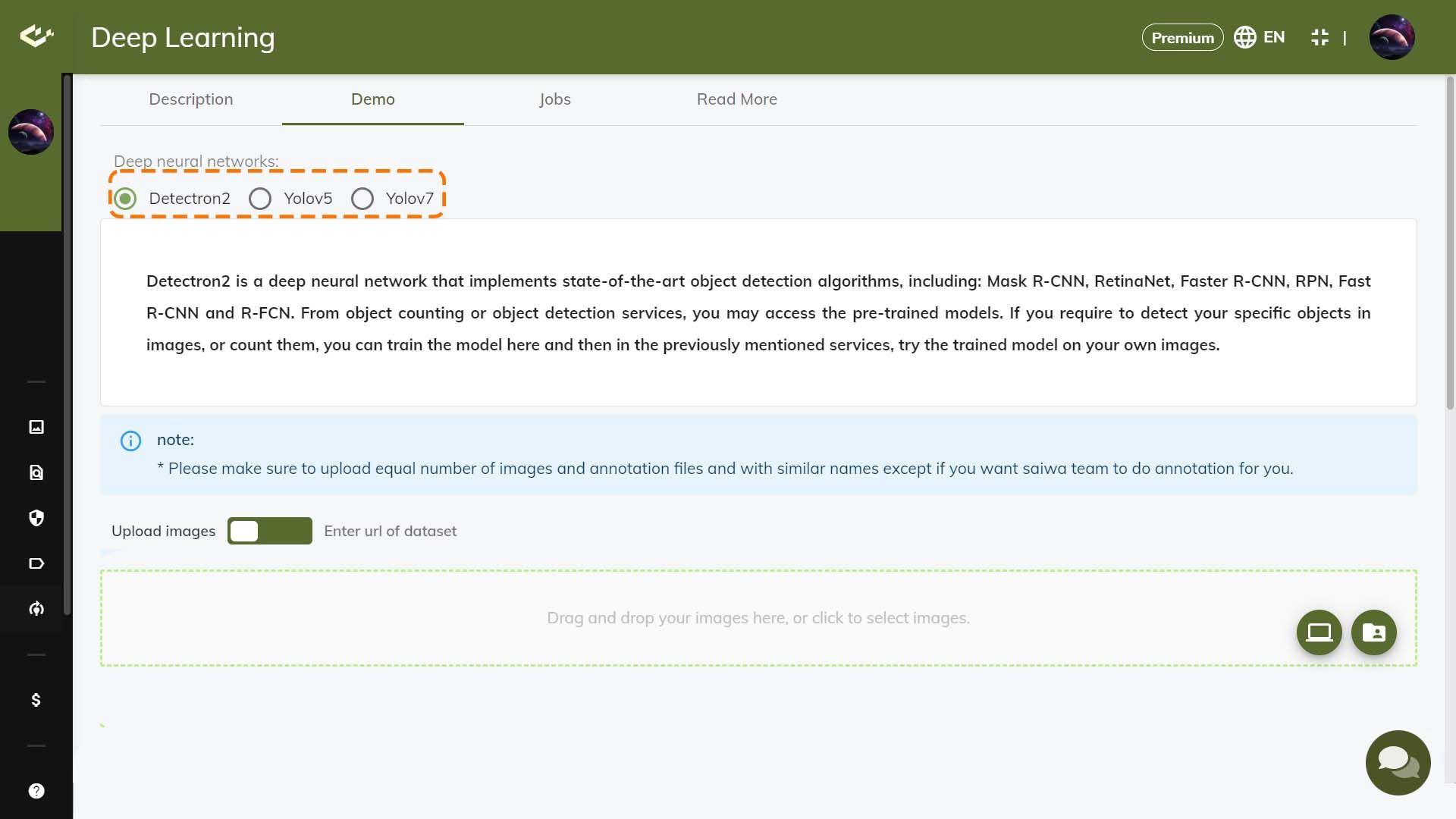
AI-Assisted Robotic Surgery
The field of robotic surgery has experienced remarkable advancements in recent years, driven by the integration of artificial intelligence (AI) technologies. AI-assisted robotic surgery represents a transformative convergence of cutting-edge robotics, machine learning, and advanced surgical techniques, promising to revolutionize the way medical procedures are performed. This innovative approach harnesses the precision and dexterity of robotic systems, coupled with the analytical capabilities of AI algorithms, to enhance surgical outcomes, minimize risks, and push the boundaries of what is possible in the operating room.
As the healthcare industry continues to embrace digitalization and data-driven decision-making, the integration of AI into robotic surgical platforms has become a focal point for researchers, clinicians, and technology companies alike. By leveraging the power of machine learning, computer vision, and advanced data analytics, these systems aim to augment the skills of surgeons, provide real-time guidance, and ultimately improve patient care.
Read Also: The Future of Healthcare | Revolutionizing AI in Healthcare
AI-Assisted Robotic Surgery

AI-assisted robotic surgery systems combine the precision and dexterity of robotic surgical platforms with the analytical capabilities of AI algorithms. These systems leverage advanced machine learning techniques to analyze vast amounts of medical data, including patient records, imaging scans, and real-time surgical information, to provide surgeons with valuable insights and decision support.
At the core of these systems are sophisticated robotic arms and instruments capable of performing intricate surgical maneuvers with exceptional accuracy and minimal invasiveness. These robotic components are controlled by surgeons through intuitive interfaces, allowing for precise and controlled movements that would be challenging or impossible with traditional surgical techniques.
The integration of AI into these robotic systems enables a range of advanced functionalities. Machine learning algorithms can analyze preoperative imaging data, such as CT scans or MRI images, to assist in surgical planning and identify potential complications or anatomical variations. During the procedure, computer vision algorithms can track the movements of surgical instruments and provide real-time guidance, ensuring adherence to the planned surgical trajectory and minimizing the risk of errors or complications.
Additionally, AI-powered decision support systems can draw upon vast databases of medical knowledge, integrating information from previous cases, clinical guidelines, and expert opinions, to provide surgeons with personalized recommendations and insights tailored to the specific patient and procedure.
Clinical Applications
The applications of AI-assisted robotic surgery span a wide range of medical specialties, revolutionizing the way various procedures are performed and enabling new frontiers in patient care.
Cardiac surgery
AI-assisted robotic systems have made significant strides in cardiovascular procedures, enabling minimally invasive techniques for complex operations such as coronary artery bypass grafting (CABG) and valve repair or replacement. The precision and dexterity of robotic systems, combined with AI-guided planning and real-time guidance, have improved surgical outcomes and reduced recovery times for patients undergoing these procedures.
Urology
Robotic-assisted surgeries have become increasingly prevalent in urological procedures, including prostatectomy, nephrectomy, and pyeloplasty. AI algorithms can assist in identifying and segmenting critical anatomical structures, enabling more accurate and safer surgical interventions. Additionally, AI-powered decision support systems can aid in treatment planning and risk assessment, leading to improved patient outcomes.
Gynecology
AI-assisted robotic surgery has revolutionized gynecological procedures, particularly in the areas of hysterectomy, myomectomy, and endometriosis treatment. The minimally invasive nature of robotic surgery, coupled with AI-guided navigation and tissue identification, has reduced trauma, blood loss, and recovery times for patients undergoing these procedures.
Disease areas and procedures seeing an impact
In this section, we review a couple of disease areas:
Oncology
AI-assisted robotic surgery has made significant strides in the treatment of various cancers, including prostate, breast, and colorectal cancers. AI algorithms can assist in tumor localization, margin assessment, and surgical planning, enabling more precise and effective tumor resection while minimizing damage to surrounding healthy tissues.
Neurosurgery
The integration of AI into robotic neurosurgical systems has facilitated minimally invasive approaches for complex procedures involving the brain and spinal cord. AI-guided navigation and real-time imaging analysis have improved surgical precision, reducing the risk of complications and improving patient outcomes in procedures such as tumor resection, deep brain stimulation, and spinal fusion.
Examples of how AI robotics is elevating surgery

AI robotics is transforming the whole industry of surgery, here are some examples for a better perspective.
Enhanced precision and accuracy
AI-assisted robotic systems offer unparalleled precision and accuracy in surgical maneuvers, enabling intricate procedures that would be difficult or impossible with traditional techniques. The combination of robotic dexterity and AI-guided navigation ensures precise instrument positioning and minimizes the risk of errors or complications.
Minimally invasive procedures
The integration of AI and robotics has facilitated the development of minimally invasive surgical approaches, reducing trauma and recovery times for patients. Robotic systems can access hard-to-reach areas through small incisions, while AI algorithms provide real-time guidance and visualization, enabling complex procedures to be performed with minimal invasion.
Robotic Surgical Systems Comparison
Several leading companies have developed advanced robotic surgical systems that incorporate AI technologies. While each system has its unique features and capabilities, they share the common goal of enhancing surgical precision, minimizing invasiveness, and improving patient outcomes.
The da Vinci Surgical System
The da Vinci Surgical System, developed by Intuitive Surgical, is one of the most widely used robotic surgical platforms. It features a robotic surgical cart with multiple articulated arms, each equipped with specialized instruments controlled by the surgeon through an intuitive console. The system incorporates AI-powered vision systems, enabling enhanced depth perception and real-time instrument tracking.
Stryker Corporation
Stryker Corporation's Mako Robotic-Arm Assisted Surgery System is designed specifically for orthopedic procedures, such as knee and hip replacements. It uses advanced imaging and AI algorithms to create patient-specific surgical plans, ensuring optimal implant positioning and alignment. During the procedure, the robotic arm provides real-time guidance and boundary protection, minimizing the risk of errors.
Machine Learning in Surgical Decision-Making
Machine learning algorithms play a crucial role in AI-assisted robotic surgery by enabling data-driven decision-making and providing valuable insights to surgeons throughout the surgical process. These algorithms leverage vast amounts of medical data, including patient records, imaging scans, and real-time surgical information, to support various stages of the surgical workflow.
Preoperative planning
Machine learning models can analyze patient-specific data, such as CT scans, MRI images, and medical histories, to assist in surgical planning and risk assessment. These models can identify potential complications, anatomical variations, or other factors that may impact the procedure, enabling surgeons to develop personalized surgical strategies and mitigate potential risks.
Intraoperative guidance
During surgical procedures, machine learning algorithms can process real-time data from robotic instruments, imaging modalities, and patient monitoring systems to provide valuable insights and guidance to surgeons. These algorithms can track instrument movements, identify critical anatomical structures, and detect potential complications or deviations from the planned surgical trajectory, enabling real-time adjustments and decision-making.
Technical Innovations
The field of AI-assisted robotic surgery is driving a wave of technical innovations that are pushing the boundaries of what is possible in surgical procedures. These innovations span various aspects of the surgical workflow, from preoperative planning and imaging to intraoperative guidance and postoperative monitoring.
Advanced imaging and visualization
The integration of AI with advanced imaging modalities, such as CT, MRI, and fluorescence imaging, has revolutionized surgical visualization and planning. AI algorithms can analyze these imaging data to create detailed 3D models of patient anatomy, enabling surgeons to plan procedures with unprecedented precision and accuracy. Additionally, intraoperative imaging techniques, combined with AI-powered image analysis and augmented reality overlays, provide real-time guidance and visualization during surgical procedures.
Surgical robotics and haptic feedback
Robotic surgical systems have evolved to incorporate advanced haptic feedback mechanisms, allowing surgeons to experience tactile sensations and force feedback during surgical maneuvers. AI algorithms can process this haptic data, providing valuable insights into tissue properties, surgical tool interactions, and potential complications, enhancing surgical precision and safety.
Conclusion
The integration of artificial intelligence and robotic systems in surgical procedures represents a transformative leap forward in the field of healthcare. AI-assisted robotic surgery combines the precision and dexterity of robotic platforms with the analytical power of AI algorithms, enabling new levels of surgical precision, safety, and personalized care. From cardiac procedures and oncological interventions to neurosurgery and orthopedics, the applications of AI-assisted robotic surgery are vast and rapidly expanding. However, as with any transformative technology, the adoption and implementation of AI-assisted robotic surgery must be accompanied by a strong commitment to ethical and responsible development. Addressing concerns around data privacy, algorithmic bias, and the implications of autonomous decision-making are critical to ensuring the safe and equitable deployment of these systems.
As we look toward the future, AI-assisted robotic surgery represents a paradigm shift in the way surgical care is delivered. By harnessing the combined power of robotics and artificial intelligence, we are poised to unlock new frontiers in precision medicine, personalized treatment, and improved patient outcomes.
